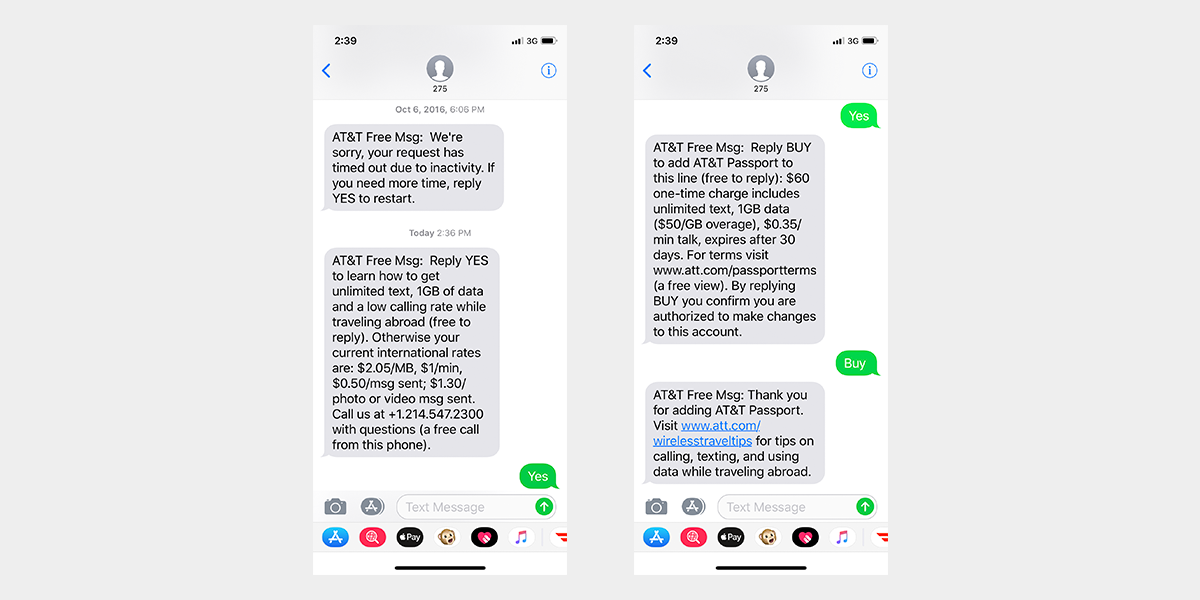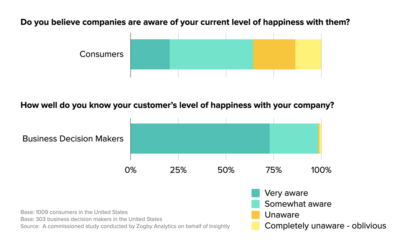As I was turning on my phone after touchdown in Toronto a few days ago, I realized that I hadn’t set up an international mobile plan for my trip. Ugh. I was in the process of making a mental reminder to log onto AT&T’s website once I got to my hotel room when I got a text:
AT&T Free Msg: Reply YES to learn how to get unlimited text, 1GB of data and a low calling rate while traveling abroad (free to reply).
With low expectations for what would happen next—as you can see in the images above, I hadn’t interacted with AT&T via SMS for nearly a year and half—I typed “Yes” and received the following response:
AT&T Free Msg: Reply BUY to add AT&T Passport to this line (free to reply): $60 one-time charge includes unlimited text, 1GB data ($50/GB overage), $.35/min talk, expires after 30 days.
Except for AT&T’s inconsistent use of the Oxford comma (yes, I’m a gramma nerd), I was delighted. And so, not relishing the idea of navigating this same procedure on AT&T’s site later in the day, I typed my answer: “Buy.”
Boom. Six letters and I was done.
No matter what industry you’re in, this is a fantastic example of how to do SMS right. AT&T anticipated a specific need and provided a ridiculously easy way for me to address it—right then and there. It sounds simple, but so many other companies that are venturing into SMS get this wrong. A couple of less-than-exemplary examples:
- Chase provides info but no transactions. I was pleasantly surprised when I found out I could text with my credit card provider. But all I can do is get the current balance on my various accounts—and this isn’t something I’m likely to do unless I’m paying a bill. Alas, there’s no SMS bill pay functionality.
- Yelp makes users switch channels to transact. Yelp sends helpful reminders about upcoming dinner reservations. But to confirm the reservations at many restaurants, users have to follow a link that takes them over to Yelp’s mobile app.
SMS will continue to increase in importance in customers’ journeys. To make the most of this channel, companies need to identify and prioritize tasks that solve key customer pain points (like forgetting to add an international plan before traveling abroad) and that lend themselves to the quick back and forth of text messaging.
But it’s not just about what functionality you implement—it’s also about how you implement it. To create effective experiences in this conversational medium, you need to understand and design for the dynamics of human conversation. One good place to start is with the new book Conversational Design by Erika Hall.




